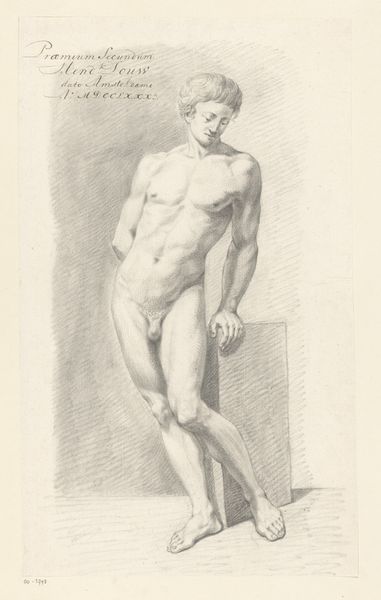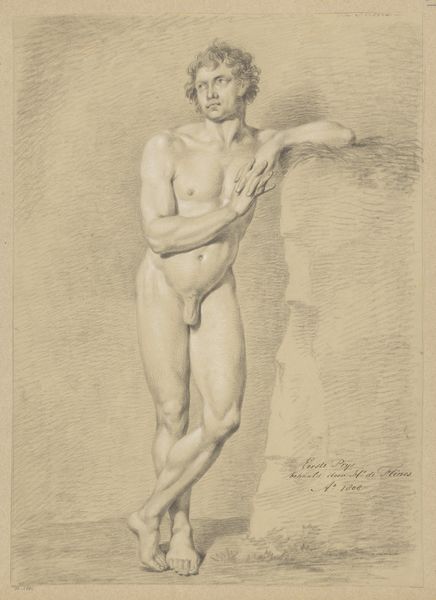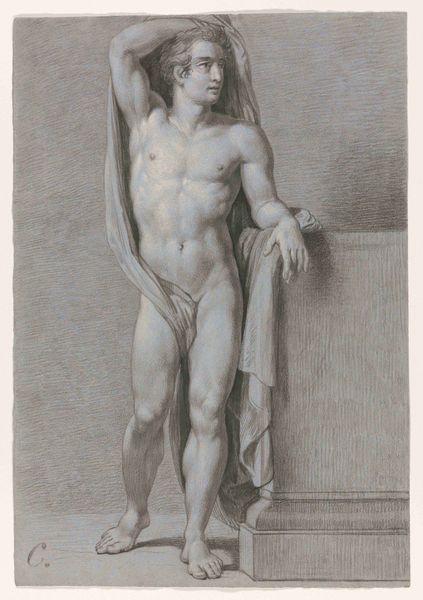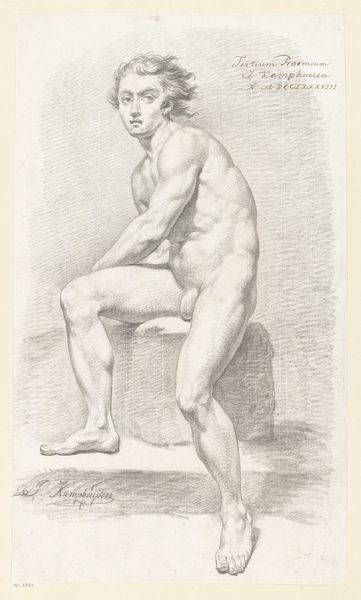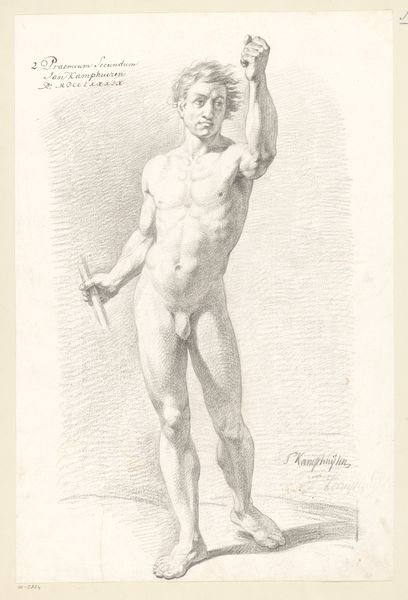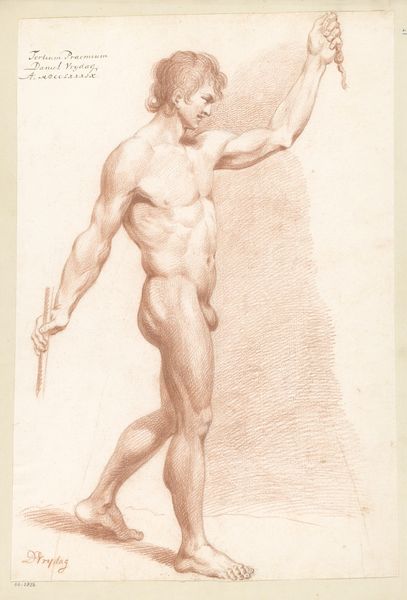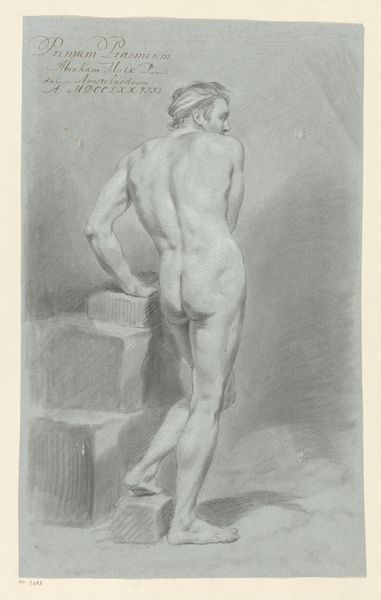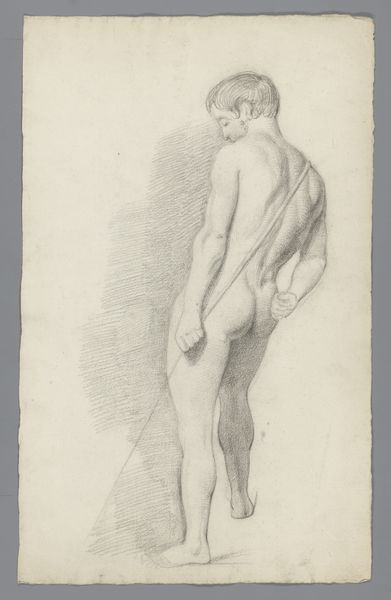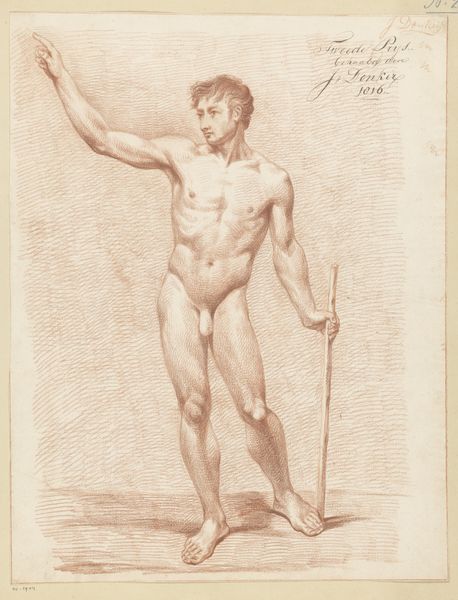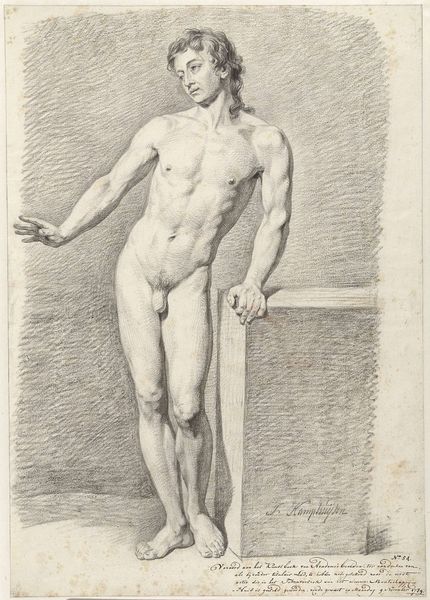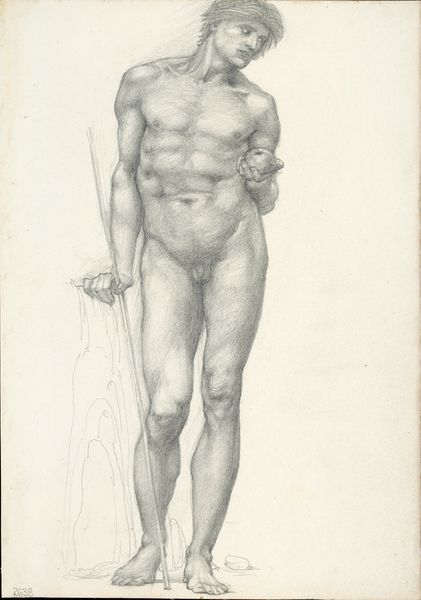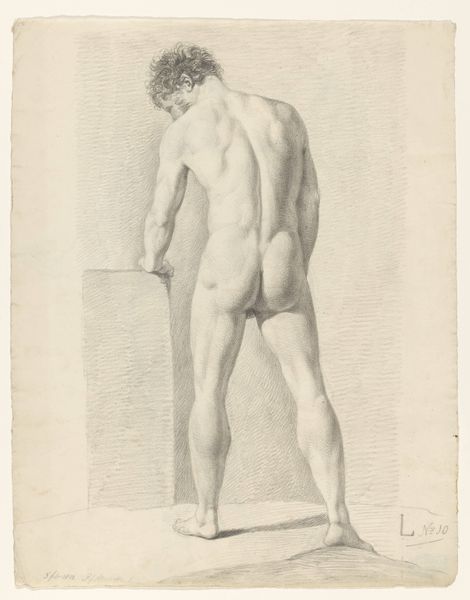
drawing, pencil
#
portrait
#
pencil drawn
#
drawing
#
pencil sketch
#
charcoal drawing
#
figuration
#
pencil drawing
#
pencil
#
portrait drawing
#
academic-art
#
nude
Dimensions: height 536 mm, width 310 mm
Copyright: Rijks Museum: Open Domain
Curator: Thomas van der Beek's "Staand mannelijk naakt, van voren gezien" from approximately 1786, created with pencil, greets us. What strikes you immediately about this nude male figure? Editor: There's a surprising vulnerability in the posture, isn’t there? The man leans wearily against a pillar. It’s not triumphant or heroic like many nudes. The figure's downward gaze hints at introspection, perhaps even a touch of melancholy. It's intimate and unsettling. Curator: Indeed. Consider that van der Beek executed this drawing during a period heavily influenced by academic art traditions. Artists frequently made studies of the nude male form, often aspiring to win awards. This particular piece, in fact, won second prize in 1786. Editor: That's fascinating. I wonder about the judging criteria at the time. The artist captures an almost weary grace that sets it apart from pure idealized representations. What can we glean about the pencil and its qualities? Curator: Absolutely. We see extensive cross-hatching techniques which would allow the artist to methodically build tone and dimension on the page. Close observation will also reveal subtle erasures. Consider the labour invested into achieving this level of refinement, and the expectations of artistic training prevalent in the 18th century. Editor: It feels very different from today. It is really something to note that the purpose was probably to demonstrate technical prowess in rendering the human form. The use of such delicate media for the powerful physique makes the artist's skill more remarkable. Curator: Precisely. The material and the hand cooperate to create a subtle tension. One may be easily drawn to questions related to class and labour – consider the position of artistic patronage within the Netherlands during this period. The figure itself has been detached from any context save for a simple pillar for support, focusing viewers attention entirely on artistic skill. Editor: Yes. Perhaps the artist hoped to see a different reflection, and to project emotions beyond the conventional standards of his time, and that melancholy and stillness resonate with viewers today. Curator: I think you’ve identified a complexity inherent in works produced through institutional frameworks. It allows one to question ideas related to creativity, labour, skill, and aspiration. Editor: Agreed. It allows the modern viewer a glimpse beyond the established conventions of 18th century artwork. Thank you for sharing.
Comments
No comments
Be the first to comment and join the conversation on the ultimate creative platform.
